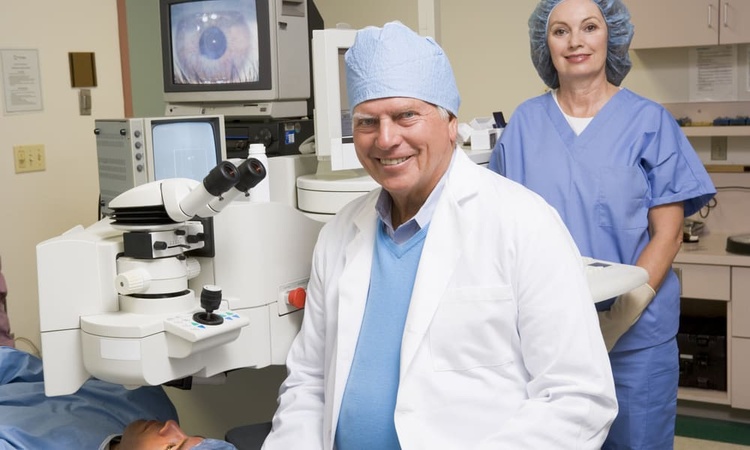Prostate Cancer Treatment: Understanding Options and Advancements
Prostate cancer is one of the most common forms of cancer affecting men worldwide. As medical science continues to evolve, so do the treatment options available to patients diagnosed with this condition. This article explores the various approaches to prostate cancer treatment, from traditional methods to cutting-edge therapies, providing valuable insights for patients and their families.

-
Surgery: Radical prostatectomy, the surgical removal of the entire prostate gland and surrounding tissues, is a common treatment for localized prostate cancer. This procedure can be performed through traditional open surgery or minimally invasive techniques like laparoscopic or robotic-assisted surgery.
-
Radiation Therapy: This treatment uses high-energy rays to kill cancer cells. It can be delivered externally (external beam radiation) or internally (brachytherapy, where radioactive seeds are implanted in the prostate).
-
Hormone Therapy: Also known as androgen deprivation therapy, this treatment aims to reduce levels of male hormones (androgens) that can stimulate prostate cancer growth. It’s often used in combination with other treatments or for advanced stages of the disease.
How effective are current prostate cancer treatments?
The effectiveness of prostate cancer treatments has improved significantly over the years. Many men diagnosed with prostate cancer now have excellent survival rates, especially when the cancer is detected early. According to recent studies:
-
For localized prostate cancer, the 5-year relative survival rate is nearly 100%.
-
Even for regional stage prostate cancer (cancer that has spread to nearby structures or lymph nodes), the 5-year relative survival rate is close to 100%.
-
For advanced or metastatic prostate cancer, treatment effectiveness varies, but new therapies are continually improving outcomes.
It’s important to note that effectiveness can vary based on individual cases, and patients should discuss their specific situation with their healthcare provider.
What are the latest advancements in prostate cancer treatment?
The field of prostate cancer treatment is rapidly evolving, with new therapies and techniques emerging regularly. Some of the latest advancements include:
-
Precision Medicine: This approach uses genetic testing to identify specific mutations in a patient’s tumor, allowing for more targeted and effective treatments.
-
Immunotherapy: These treatments harness the body’s immune system to fight cancer cells. While still in development for prostate cancer, immunotherapies like Sipuleucel-T have shown promise for certain advanced cases.
-
Focal Therapy: This technique aims to treat only the cancerous areas of the prostate, minimizing side effects. Methods include high-intensity focused ultrasound (HIFU) and cryotherapy.
-
Proton Beam Therapy: A form of radiation therapy that uses protons instead of x-rays, potentially reducing damage to surrounding healthy tissue.
-
PARP Inhibitors: These drugs, which target specific genetic mutations, have shown promising results in treating certain types of advanced prostate cancer.
How is prostate cancer diagnosed and staged?
Accurate diagnosis and staging are crucial for determining the most appropriate treatment plan. The diagnostic process typically involves:
-
PSA A blood test measuring prostate-specific antigen levels, which can be elevated in prostate cancer.
-
Digital Rectal Exam (DRE): A physical examination where the doctor checks for abnormalities in the prostate gland.
-
Imaging Tests: MRI, CT scans, or bone scans may be used to visualize the prostate and check for cancer spread.
-
Biopsy: If initial tests suggest cancer, a prostate biopsy is performed to confirm the diagnosis and determine the cancer’s aggressiveness (Gleason score).
Once diagnosed, prostate cancer is staged based on its extent and aggressiveness, ranging from Stage I (early, localized cancer) to Stage IV (advanced, metastatic cancer).
What are the potential side effects of prostate cancer treatments?
While prostate cancer treatments have become more refined, potential side effects remain a concern for many patients. Common side effects can include:
-
Urinary Incontinence: Particularly common after surgery or radiation therapy.
-
Erectile Dysfunction: Can occur with surgery, radiation, or hormone therapy.
-
Bowel Problems: More common with radiation therapy.
-
Fatigue: Often associated with radiation therapy and hormone therapy.
-
Hot Flashes and Loss of Libido: Typically linked to hormone therapy.
It’s crucial for patients to discuss potential side effects with their healthcare provider and weigh them against the benefits of treatment. Many side effects can be managed or may improve over time with proper care and rehabilitation.
In conclusion, prostate cancer treatment has come a long way, offering patients a range of options with improving outcomes. From active surveillance for low-risk cancers to advanced therapies for more aggressive forms, the approach to treatment is increasingly personalized. As research continues, new treatments and techniques are likely to further enhance the care available to prostate cancer patients, potentially reducing side effects and improving quality of life during and after treatment.
This article is for informational purposes only and should not be considered medical advice. Please consult a qualified healthcare professional for personalized guidance and treatment.






